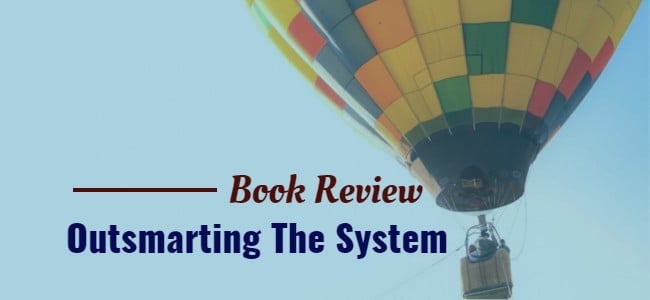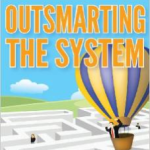Recently a reader reached out to me and explained how he had written a book and wanted to know if I was interested in reading and reviewing it. The book, Outsmarting the System: Lower Your Taxes, Control Your Future, and Reach Financial Freedom, teaches people how to reach financial freedom by lowering their taxes in the same ways as the rich. It’s written specifically for entrepreneurs and business owners.
Although I normally would have turned this opportunity down (I have a large backlog of books on my list), I have actually been very interested in this exact topic since Vicky and I first filed our taxes as self-employed entrepreneurs this year.
So I agreed!
I’m not going to encourage you to buy or not buy the book – I honestly have not read any other books in this space and really whether you feel the topic is interesting is entirely up to you. I simply want to provide an objective review based on what I read.
Synopsis:
Let’s face it – no one really likes taxes, and chances are if you’re in or around the middle class, you probably pay a lot.
At the same time, many of us suspect that the “rich” (which is not defined explicitly in this book, but we all know who they are) pay a lower percentage in taxes than many of the rest of us.
And indeed, this is true.
For example, in 2010 Mitt Romney effectively paid around 14% in taxes.
Seeing as this is about half of what most of us pay, who make far less than 21 million dollars a year, and assuming that nothing illegal is going on, it begs the question:
What’s going on here?
Effectively, this is what Outsmarting the System is about. It explains how Mitt Romney and guys like him can “get away” with paying less taxes in a relatively simple and straightforward way that we can all understand.
Here’s how it’s done, in really simple terms.
First you have to understand how money you make is taxed. A certain portion of your earnings is considered taxable income, and it is your
Income – Adjustments to Income – Expenses – Deductions = Taxable Income
You want the right side to be low, so that means you want to decrease your income and increase the rest.
The balance is of course maximizing for take home pay and minimizing taxable income.
Tony breaks this into three buckets:
- Investor (stocks, bonds, etc)
- Landlord (real estate)
- Small Business (business income)
Essentially, each of these buckets (which are effectively ways to earn money) have their tax benefits.
For example, Investors may buy bonds, and the interest on these is generally not taxable. Similarly, they may receive qualified dividends from a stock, which is taxed at a lower rate. Lastly there are long term capital gains, like personal assets, that when sold also get preferential tax income.
The Landlord, on the other hand, has certain expenses such as property taxes, insurance, and mortgage interest. Additionally, a yearly depreciation factor is built in (even if the property itself is appreciating in value), and when everything is combined it allows you to essentially write off a portion or perhaps all of your rental income.
Lastly, the Small Business Owner is entitled to write of his business expenses, which can be things like travel, food, personal assets, and even housing expenses if you work at home. In terms of wages, the business owner pays himself first and then is taxed, whereas the wage earned pays the government first, and then gets the leftovers.
In short, to get the tax benefits that the rich get, you want to start moving your money and income into those three categories. This is why Mitt Romney, who has $0 in wages but millions of dollars in qualified dividends and long term capital gains, was only taxed at 14%.
From here on out, the question is basically how does one do that, and the book spends a few chapters advising on how to get into investing, or start a business, or purchase real estate.
Indeed, it’s helpful information, but for me it was a bit off track – it’s just too broad of a topic to really go into depth in just a few chapters. I would have preferred more chit chat about taxes and looking at various case studies in the way ones income could be divided.
The last few chapters is about reporting and record keeping. It goes into specific deductibles and what is allowed and what isn’t.
Overall – I was glad to have had the opportunity to read the book. Now this is a quick read, less than 100 pages, and speaks at a very high level to make the book relatively digestible
Of course, relative is the keyword here. It’s important to note that this is by no means a breeze to read – it’s tax law for dummies, and I went through it twice myself to try to understand it better.
It’s purposely made abridged and can be a bit cursory at times, but the point is to plant the ideas in your head so that when you see something that might apply to your situation, you can dig further (often the recommendation is to go ask a professional.
Bottom line – if you really want to make the most of your money, you should be thinking about your taxes, because lowering them by even a few percent could mean thousands of dollars every year. This book might not get you the full way there but it’s a great start.
How do you handle your taxes?

